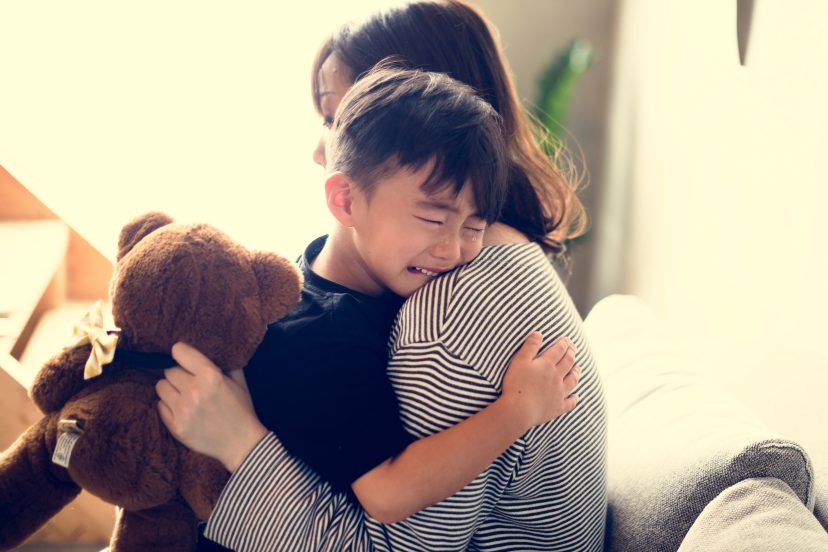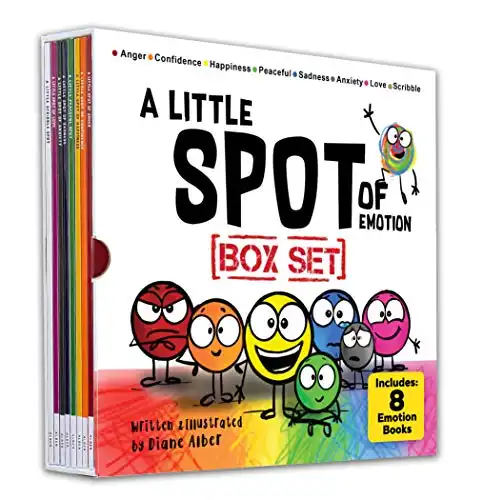How To Connect With Your Child After A Conflict
Conflicts with your child are inevitable, but how you handle the aftermath can make all the difference. Rebuilding the connection after a heated moment strengthens your relationship and teaches your child vital lessons about love, trust, and problem-solving. Let’s dive into how you can reconnect after a tough moment.
Table of Contents
Why Connection After Conflict Matters
Conflict with your child is inevitable—it’s part of being human and living in a family. But what really matters is what happens afterward. Why? Because reconnecting after a disagreement isn’t just about smoothing things over; it’s about fostering emotional security, teaching life skills, and creating a foundation of trust that will last a lifetime.
The Emotional Impact of Conflict on Children
Kids experience conflict differently than adults. While we might see it as a momentary clash, they often internalize it as something deeper. When you argue or have a disagreement, they may feel rejected, confused, or even scared, depending on the intensity of the conflict. This emotional turmoil can lead to feelings of insecurity or doubts about their place in the family.
For younger children, these emotions might manifest as clinginess, tantrums, or withdrawal. For older kids, it could look like sulking, defiance, or shutting down emotionally. In either case, they need your help to process what happened and to feel reassured that your love and connection remain intact, no matter what.
By reconnecting after a conflict, you’re telling your child, “Yes, we had a tough moment, but I’m still here for you.” This simple act helps restore their sense of safety and stability, showing them that disagreements don’t equate to a loss of love or security.
Building Trust Through Post-Conflict Connection
Every time you take steps to repair your relationship after a conflict, you’re strengthening the trust between you and your child. This trust isn’t just about knowing they can count on you to provide for their physical needs—it’s about emotional reliability. It’s about them feeling confident that you will show up, even when things get messy.
When you consistently reconnect, you send the message that it’s okay to make mistakes and that relationships can weather storms. Your child learns that conflict isn’t something to fear or avoid but rather something that can lead to understanding, growth, and even deeper bonds. This mindset will serve them well throughout life, helping them navigate friendships, romantic relationships, and professional dynamics with confidence.
Steps to Reconnect With Your Child
Reconnecting with your child after a conflict can feel challenging, especially if emotions are still running high. However, the steps you take to repair the bond are crucial for building trust, emotional security, and a stronger relationship. Let’s break down each step in detail.
Take a Moment to Calm Down
When tempers flare, the best thing you can do is hit pause. Trying to resolve a conflict when emotions are heightened can often do more harm than good. This step might feel counterintuitive—shouldn’t we fix the problem immediately?—but taking time to calm down is essential.
Why Your Emotional State Matters
Children are incredibly perceptive. If you’re still angry or upset, your child will pick up on it, even if you’re trying to stay composed. Your emotional state sets the tone for how the conversation will go. When you take a few minutes to regulate yourself—whether that’s through deep breathing, stepping outside, or even splashing water on your face—you give yourself the chance to respond thoughtfully rather than react impulsively. This shows your child that it’s okay to pause and reset before tackling tough emotions.
Acknowledge Your Child’s Feelings
After you’ve calmed down, your first step in reconnecting is to acknowledge your child’s feelings. This might sound simple, but it’s one of the most powerful ways to validate their emotions and make them feel seen and heard.
Validating Emotions Without Judging
Children often struggle to articulate their feelings, especially during or after a conflict. Saying something like, “I can see that you’re upset,” or “I understand that you felt frustrated when I said no,” helps your child feel understood. Avoid dismissing their emotions with phrases like, “It’s not a big deal,” or “You’re overreacting.” Instead, focus on showing empathy. By doing this, you’re teaching your child that their feelings matter, even when they’re difficult to manage.
Offer a Genuine Apology When Needed
As parents, we often feel pressure to always have the “right answer,” but being human means we make mistakes too. If you’ve done or said something that contributed to the conflict, offering a sincere apology can work wonders in rebuilding trust.
Modeling Accountability for Your Child
Apologizing doesn’t undermine your authority—it enhances it. When you say, “I’m sorry for yelling earlier; I should have spoken to you calmly,” you’re modeling accountability and humility. This helps your child understand that everyone, even grown-ups, makes mistakes. More importantly, it shows them how to take responsibility for their actions in their own conflicts with others. A genuine apology paves the way for meaningful conversations and mutual understanding.
Create Space for Open Communication
After acknowledging emotions and apologizing, it’s time to open the floor for dialogue. Creating a safe space for communication lets your child share their side of the story and feel like an equal participant in resolving the conflict.
The Power of Asking Questions
Instead of jumping straight to explanations or solutions, ask open-ended questions like, “What were you feeling when that happened?” or “Can you help me understand why you were upset?” This not only helps your child process their emotions but also shows them that their thoughts and feelings are valued. Keep your tone gentle and curious, not accusatory. This approach encourages honesty and helps both of you understand each other better.
Reaffirm Your Love and Support
Conflict can leave children wondering if they’ve disappointed you or if your love for them has changed. Reassuring them of your unconditional love is a crucial step in repairing the bond.
Actions Speak Louder Than Words
Words are important, but actions often speak louder. A hug, a warm smile, or simply sitting close to your child can convey your love in ways that words sometimes can’t. Verbally reaffirm your support with phrases like, “I love you no matter what,” or “We had a tough moment, but that doesn’t change how much I care about you.” These gestures and words help rebuild emotional safety and remind your child that your love is constant, even during tough times.
Focus on Problem-Solving Together
Once the emotional dust has settled, use the opportunity to work together on preventing similar conflicts in the future. This step shifts the focus from blame to collaboration.
Collaborating on Solutions for Future Conflicts
Ask your child for their input: “What could we both do differently next time to avoid this kind of argument?” This question fosters teamwork and makes your child feel like their voice matters. It also teaches them that conflicts are opportunities to learn and grow. Together, you can brainstorm practical solutions that work for both of you, such as setting clearer boundaries or finding better ways to communicate when emotions run high.
By following these steps, you’re not only repairing the immediate aftermath of a conflict but also teaching your child how to navigate disagreements with empathy, accountability, and problem-solving skills. Each step helps build a stronger, healthier parent-child relationship that thrives even in the face of challenges.
Practical Tips for Repairing the Relationship
Repairing the relationship after a conflict isn’t just about having one heartfelt conversation and calling it a day. It’s about using consistent, practical strategies to rebuild trust and foster a sense of security over time. Here are some actionable tips that can help you reconnect with your child and strengthen your bond.
Use Play as a Bridge to Connection
Play is a child’s natural language, and it’s one of the most effective ways to reconnect after a conflict. It breaks down barriers, lightens the emotional atmosphere, and brings a sense of joy and fun back into your relationship.
Engage in activities your child loves—whether it’s building with blocks, playing a favorite board game, or simply being silly together. For younger kids, imaginative play, like pretending to be pirates or superheroes, can help them feel safe and close to you again. For older kids, something as simple as a game of cards or tossing a ball around can work wonders. These moments of shared laughter and fun help repair the emotional rupture caused by conflict and remind your child that your relationship is about more than just rules and discipline.
Spend Quality One-on-One Time Together
After a conflict, it’s especially important to carve out time to be with your child, free from distractions. This one-on-one time signals to them that they are valued and cherished, which helps rebuild their sense of security.
Spending time doesn’t have to be elaborate. A walk around the neighborhood, baking cookies, or even sitting down to watch their favorite show together can create meaningful moments of connection. The key is to be fully present—put your phone away, avoid multitasking, and focus entirely on your child. This intentional attention reinforces the message that your bond is strong, even when you hit bumps in the road.
Practice Active Listening Daily
Active listening is a skill that benefits both you and your child. When you consistently listen to your child with patience and empathy, you create an environment where they feel safe sharing their thoughts and feelings—even during tough times.
When your child speaks, give them your undivided attention. Make eye contact, nod, and use affirming phrases like, “I hear you,” or “That sounds frustrating.” Avoid interrupting or immediately jumping in with advice. Instead, reflect their feelings back to them: “It sounds like you felt left out when that happened.” By doing this, you’re showing your child that their emotions matter and that you value their perspective. Over time, this habit builds trust and fosters a deeper connection, making it easier to navigate future conflicts.
Express Affection and Reassurance
Physical and verbal affection can help repair the emotional distance caused by conflict. Sometimes, a simple gesture like a hug or holding their hand can communicate your love more effectively than words. For children who might not be ready for physical affection immediately, a kind smile or a soft tone of voice can still go a long way.
Verbal affirmations are equally important. Say things like, “I love you,” “I’m proud of you,” or “You’re such an important part of this family.” These reassurances help your child feel secure and loved, reinforcing the bond between you even after a disagreement.
Use Rituals to Reconnect
Rituals are powerful tools for building connection. They provide structure, predictability, and a sense of belonging, all of which are especially important after a conflict.
Create small, daily rituals that strengthen your bond. For example, have a bedtime routine where you read a story together or talk about the best parts of your day. Share a special handshake, a favorite song, a weekly family fun time. These rituals provide consistent opportunities for connection and reassurance, showing your child that your relationship is a constant in their life.
Foster Laughter and Joy
Laughter is one of the best ways to heal emotional wounds. It releases tension, lifts spirits, and strengthens bonds. After a conflict, find ways to bring humor back into your interactions. Tell a funny story, make silly faces, or watch a hilarious video together. Laughter reminds your child that your relationship is rooted in love and joy, even when disagreements arise.
Encourage Positive Expressions of Emotion
Help your child process their emotions in healthy ways. Encourage them to talk about how they’re feeling, draw pictures, or write in a journal. Let them know that all emotions are okay—it’s how we handle them that matters. By supporting their emotional expression, you’re teaching them how to cope with and move on from difficult situations.
A little spot was developed with children, parents and teachers in mind. These books have been carefully crafted to make not only teaching SEL fun learning it too!
Closing Thoughts From Me
Connecting with your child after a disagreement provides a valuable opportunity to model healthy emotional habits. Kids learn by watching us, and when they see you taking steps to repair the relationship—whether it’s through an apology, a hug, or a heartfelt conversation—they’re absorbing those behaviors. They learn that it’s okay to admit when you’re wrong, to take responsibility, and to actively work on making things right.
Over time, this modeling teaches them critical life skills like empathy, accountability, and effective communication. It helps them understand that relationships aren’t perfect, but with effort and care, they can overcome challenges.
FAQs
How soon should I reconnect after a conflict? It’s best to reconnect once both you and your child have calmed down. This ensures a more productive and heartfelt conversation.
What if my child doesn’t want to talk? Give them space and let them know you’re available when they’re ready. Sometimes kids need time to process their emotions.
Can I use these tips for older kids or teens? Absolutely! While the approach might vary slightly, the principles of validation, apology, and open communication work for all ages.
How do I handle repeated conflicts? Focus on patterns and collaborate on long-term solutions. Consistent problem-solving and communication help minimize recurring issues.
What if I struggle to stay calm during conflicts? Practice self-regulation techniques like deep breathing or mindfulness. Over time, staying calm will become easier, even in challenging moments.





